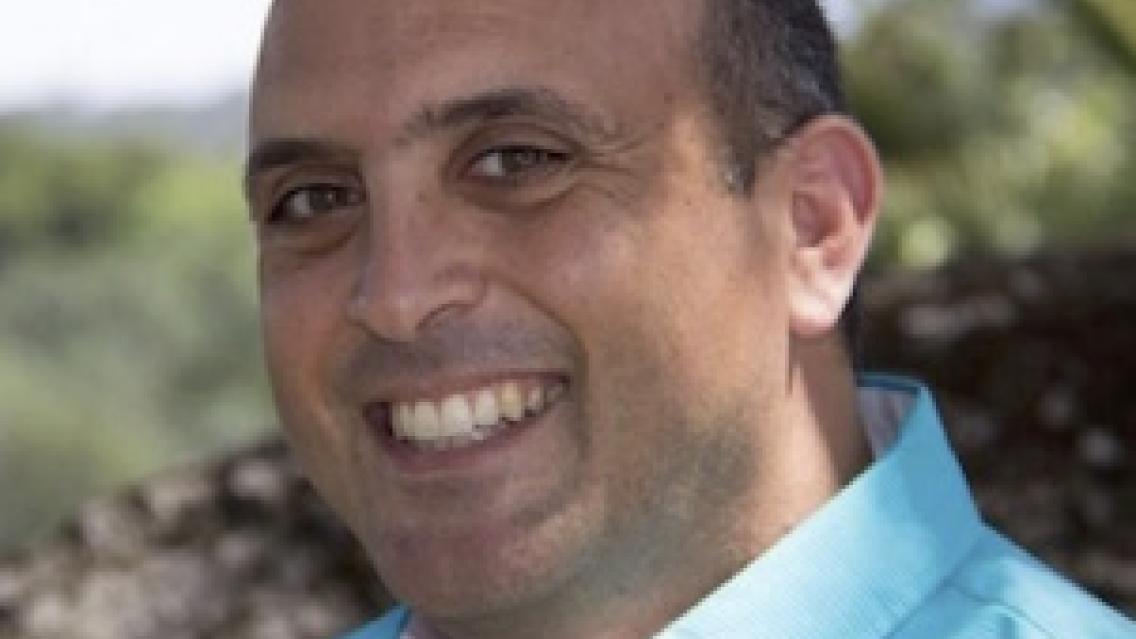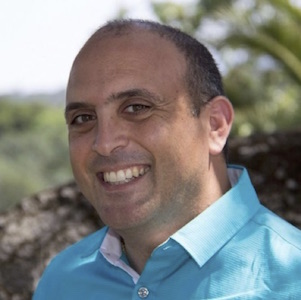Landscape and Ecosystems Thematic Lead Interview -- David Saah

For more information about this SERVIR service area campaign, click here.
Name/Title
Dr. David Saah, Science and Data Co-Lead, SIG/University of San Francisco
 |
What is your educational background?
I have a PhD in Environmental Science, Policy and Management from the University of California, Berkeley and am an Associate Professor and Director of the Geospatial Analysis Lab at the University of San Francisco.
What do you do in your current position? What are you working on now?
As the current data and science co-lead for SERVIR-Mekong, I do several things. First, I co-manage the definition, design, and implementation of service deliveries for our hub. Second, is to strategically build geospatial information technology capacity within ADPC as the lead of our consortium. Third, is to develop external partnerships with organizations such as Google and the Food and Agriculture Organization to assist with service delivery and capacity building. And, last - but most exciting - I take the strategic lead in the development, design, and implementation of SERVIR-Mekong’s regional land cover monitoring system.
What are the biggest landscape/ecosystem challenges in the Mekong region? How can GIS and remote sensing technologies help address these problems?
The Lower Mekong region is made up of complex landscapes that are heterogeneous in their ecology, politics, economics, and social constructs. And when trying to describe these landscapes, organizations typically simplify these complexities in a way that meets their needs within the limited resources they have. For example, a Ministry of Agriculture and a Ministry of Forestry each look at the same landscape is very different ways. The Ministry of Forestry would prioritize the mapping of biodiversity, structure, condition, and use (natural vs. plantations) of forests, while having a simple mask to designate areas that are of no interest (agriculture, water, urban areas, etc.) and has the budget to map out forests every ten years. While a Ministry of Agriculture would mask out the forest as one class and map different dimensions of agricultural including irrigated vs. non-irrigated, crop type, crop yield, condition, etc., and has the budget to map every five years. While the class “orchards” is mapped separately by both agencies using various methods that don’t let them match up. The different priorities of the agencies, resource availability, and capacity to develop information create a situation where the information flow puts the agencies at odds with one another just by the structure, consistency, and delivery of mapping products that they both need to meet their mandates. Now the Ministry of Transportation needs land cover maps for some transportation planning and has to choose between two versions that do no fit their needs, and the saga continues.
This example is not too far from the reality on the ground that is further complicated by things like transboundary issues. And when one looks at the critical ecosystem challenges facing the region, the conversion of forest-to-agriculture rises to the top of the list. The need for separate land cover mapping products that meet multiple requirements and are internally consistent becomes a bottle-neck for achieving a sustainable landscape. In response to this need, SERVIR-Mekong has defined, designed, and implemented a Regional Land Cover Monitoring System (RCLMS) that allows an end user to create the land cover maps that they need to meet their sustainable management goals, leveraging NASA’s Earth observation data and Google’s Earth Engine analytical platform. The RCLMS is not a technology dump, but a service delivery where we first get to know people on the ground - the end users - to understand their real needs. Based on their needs we co-develop a land cover map that is purpose-built then deployed within their organizations so they can take ownership of the process. Lessons learned from one organization are shared with others, and experiences learned from one SERVIR hub are then transferred to other hubs. It's exciting!
What specific tools and technologies are you using to solve these problems?
There are three things we are currently doing to solve the problems associated with land cover mapping:
First, and most important, we are bringing in all the land cover mapping-related stakeholders into a conversation and listening to what their needs are through workshops, consultations, and deep-dive engagements to develop a collaborative relationship. This first step is implemented using SERVIR’s Service Planning Approach.
Second, depending on their needs, developing and implementing land cover maps within the RCLMS based on the best available science and Earth observations. This step is completed using our university networks, relationships with government agencies, the NGO community, local experts, and NASA data products.
Third, we implement the RCLMS framework using the defined methods and Earth observations within the Google Earth Engine platform for an organization to use on an operational basis. For the RCLMS, Google Earth Engine is probably the most revolutionary technology out there that allows us to deliver multiple land cover maps to a variety of stakeholders built on their needs.
What do you find unique about your work with SERVIR?
The most exciting thing about working with SERVIR is how much you learn from the collaborative process at different levels of engagement. For example, our hub is a consortium, so there’s exciting learning that occurs just the way we work together and share experiences, which is impressive. When engaging with our stakeholders, their understanding of what their needs are is much deeper and more detailed than what you read from a white paper or get from a brief meeting. SERVIR is a family of hubs filled with many organizations, so we take what we learn and share with our sister hubs in Eastern and Southern Africa, West Africa, and in Hindu Kush Himalaya, and they do the same for us. That exchange provides a fantastic learning opportunity for all involved and is unique to SERVIR.
How will SERVIR and the wider GIS community benefit from the new services and applications you are developing?
The geospatial community does not have to wait until we have a paper published to learn about what we are doing, they are invited to observe and participate during the entire process including sharing code, data, and methods. We are often engaged with people who have no connection to SERVIR, but still manage to contribute significantly. Once a service delivery is complete, the code, data, tools, and publications are made available to all. For example, we recently attended a Google Earth Engine conference in Dublin, Ireland and we learned that the wide variety of Google Earth Engine users are tapping in and using a lot of the scripts we created for the regional land cover monitoring system. We urge people to give back and use our solutions as much as possible and maintain that co-learning environment using collaborative science to gain new knowledge about complex scientific and sociological questions. The more people are looking at a challenge, the better, which is why we want to involve the broader community in what we’re doing.
What are some of the main achievements of your work so far in this thematic area?
For SERVIR-Mekong’s land cover, land use change, and ecosystems thematic area we have had many successes, especially the following two examples:
First, is the number of service deliveries that the RLCMS is supporting (9), including the recently issued State of the Land Report. This groundbreaking report relied on SERVIR-Mekong’s Regional Land Cover Monitoring System to inform regional assessment and comparative cross-country analysis of land use and land cover change in the Mekong region.
Second, is local capacity building. For example, SERVIR-Mekong has conducted several RCLMS Google Earth Engine (GEE) trainings in response to regional challenges in accessing remote sensing data, hardware, and software. One of the trainees was Pham Ngoc Hai who is a researcher at the Vietnam Remote Sensing and Information Technology Centre, where he applies remote sensing for forest cover monitoring in Vietnam. Hai says using GEE to access the immense catalog of satellite data has improved communications between national and local level forest personnel. Together they are now able to better track, manage, and grow Vietnam’s forests.
Is there anything else you would like to share with our readers?
One thing I want to share with readers is the real value of a consortium--bringing people from diverse backgrounds to address complex needs is critical in making a positive impact. The richness of information you can get from bringing those folks together from a wide range of life experiences and educational backgrounds creates synergies and teaching moments that you can’t learn from a book. These communities are critical in making a change, and at SERVIR-Mekong we’ve been able to construct this community.
This interview was conducted by Wadee Deeprawat at SERVIR-Mekong. It has been lightly edited for style and length by SERVIR Global.

